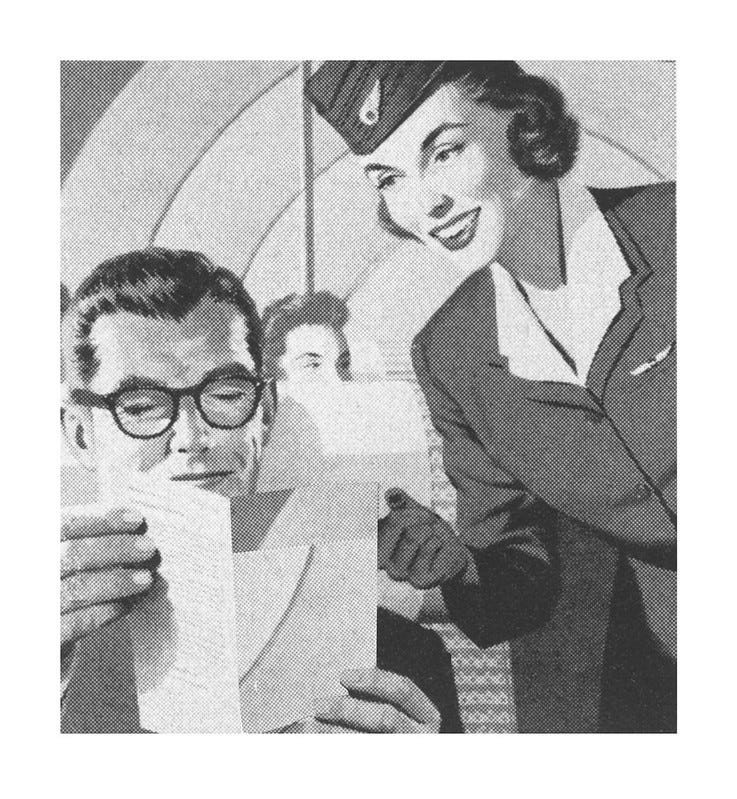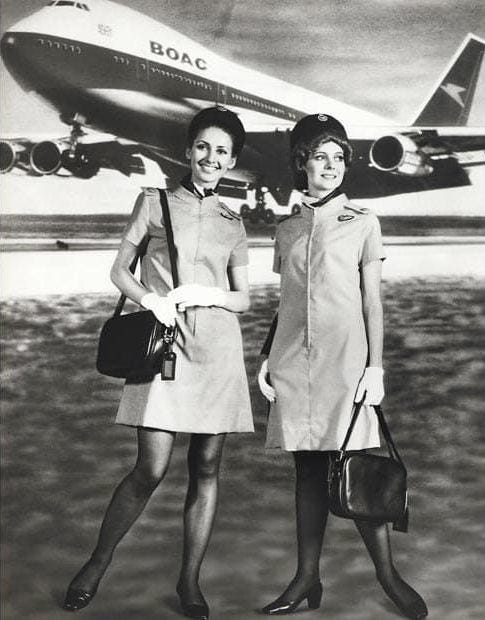A flight attendant's glossary of terms
The terms only insiders know
In the span of two week I've hung out in 4 states (outside of the airport) and traveled to 2 different countries in very different parts of the world, so I'm a tired girl. It's all glamor and glitz until you've been traveling for so long that lifting your arms on the plane would mean causing a wave of B.O. to waft down the aisles.
Hot stuff!
So I figure this is the perfect time to give storytelling break and give you all a glossary of terms to throw around. That way when you talk about those damn slam clickers who blew a slide because they didn't cross check after two lean-overs in a row, your friends will either think you're speaking another language or that you're a real jet setter.
A flight attendant's glossary of terms
Galley queen- A flight attendant who lords over the galley like it's their own kitchen. They sigh and scoff if you move anything around, like recycling bags or a single napkin, and passive aggressively ask, "can I get you something?" whenever you start opening containers for a drink for yourself or a passenger. They hover over you, breathing like Darth Vader down the back of your neck should you wander into the vicinity of their galley. Then they later complain about not getting enough help with service.
Lean over- This one is a personal favorite. It's a term for a layover that usually clocks in around 6 hours between landing one flight and taking-off on the next. I like to picture a tired flight attendant leaning against a wall with her eyes shut, fully dressed in uniform. This might make more sense than trying to shower, wind down, fall asleep, wake up, get dressed and catch the shuttle to the airport for the next flight within a six hour window.
Cross checking- A family friend of mine was very excited to learn this term after years of traveling and being left in the dark about it. A flight attendant can either cross-check herself or another flight attendant. We stand by the door we're assigned to, and double check that we either armed the door for take-off or disarmed the door upon pulling up to the gate. It's probably the most important task of our job. Once you know it's either armed or disarmed, you'll hear us say something like, "one left, one right, disarmed and cross-checked." Don't you dare distract us at this point!
Blowing a slide- Speaking of distraction, let's talk blowing slides. This is a big no-no. This happens when a door is left armed when it should be disarmed. When the gate agent or someone from catering opens the door from the outside, a giant slide with serious force and power deploys from the door and can cause injury, or worse. Only in the case of an emergency should the slide deploy so passengers and the flight crew can get out and away from the plane. It also costs an airline thousands of dollars to replace. And in the case of the incident I witnessed, it also forced a whole plane of passengers to have to deplane and book a new flight because a plane can't fly with an inoperable slide.
(In case you missed it, I wrote my first Substack post about a blown slide incident that cost me precious hours of sleep and caused me to have an emotional breakdown in the airport parking lot, but the incident also gave me a chance to explore Boston. You win some you lose some.)
Jumpseat- Where flight attendants sit and buckle in for take-off, landing, and in the case of turbulence.
Sit- A sit is what civilian travelers would call a layover. For us in aviation it means the time you need to hang out at an airport before your next assigned flight. We all complain when our schedule involves multiple sits in a day. It can really drag things out.
The flight deck- Formerly known as the cockpit. Calling it the cockpit is a tell-tale sign that you worked in the industry in the late eighties and might still sport the same hairstyle from then.
Non-rev- An employee of an airline or their beneficiaries who fly for free or only pay taxes for a flight. You're welcome, family!
Base- Every flight attendant is assigned a base. This means we must start and end our trips in the base we're assigned to or awarded. We're able to pick up trips in other bases, but for the most part people must start and end trips in their base. I can't just hop on a flight to Paris as a non-rev and then work the flight back after spending a leisurely week there. But it'd be cool if I could.
Rotation- A rotation usually consists of a 3-day trip, a 2-day trip and the more elusive, snow leopard of a 4-day trip. The more credit (paid flight time) you can get in a rotation, the better for the paycheck.
Bidding- A process of asking for what you want in your schedule. For instance, this month I bid for long layovers in Orange County and Salt Lake to hang out with family and see my dog child. I also bid for report times no earlier than 8 am, because those early flights can really wear a girl out.
Holding a line- When you're senior enough to "hold" a trip on your schedule. I would love to hold a line to Honolulu and back every Monday and Tuesday all winter long. But this won't happen until I've put in my time like all the other minions.
On reserve- When flight attendants must be available to fill in for a trip or a rotation last minute. We sleep with our phone on full volume by our heads, bags packed with a bathing suit and sweaters because we don't know if, when or where we're going. It's a real Russian roulette of a time.
Working the line- Anytime you're working a scheduled trip and not on reserve.
Commuting- Just as simple and crazy as it sounds. Some flight attendants might be based in Minneapolis but live in Austin, for instance. This means that before every rotation, they need to be in base with enough time to check in before their assigned flight. I've heard of "double commuters" who need to take two flights to get to their base. Imagine how much time you end up spending in the air! I worked with someone who lived in Spain and whose base is Boston. That's a 6 hour commute, not including boarding time and getting through customs. But if you think about it, it's as much time people spend commuting to work by car in a week with just a 30- minute drive. The good and hard thing about our job is that we work for days at a time, making commuting by plane possible.
Slam clickers- This describes flight attendants who aren't here to make friends. Once they get to the hotel, they slam their door and wait for the click of the lock. You won't see them again until the shuttle ride the next morning. The rest of us will be at the bar in the evenings and out exploring during the day. We all have our slam-clicking moments.
Turn- A turn involves hopping on a flight to a destination and taking that plane right back to your base. Senior mamas and papas like these because it means you get to sleep in your bed at night and be on the clock for several hours without the layover.
Leg- A leg is one flight in a schedule. Most junior flight attendants work at least two legs in a day. We fly to so many different airports in a single rotation that I only think about layover cities as an actual destination. Most will swap out of or avoid 4 legs in a day because boarding the plane is the most taxing part of the job. Some people just don't have spatial or any other kind of awareness to do with their bodies or belongings.
Penalty lap- This usually happens the last day of a rotation. For instance, I worked one leg out of Raleigh-Durham to Minneapolis, my former base. Ah, so close to a warm shower and a real meal. But no. The crew and I had to work a penalty lap from Minneapolis to another airport and back again. It's a tease to land at base at noon and then know you won't be back for another 6 hours.
That's it for now. I'll update this list as I learn more lingo on the job.
Is there a phrase or a term that I missed that you've been wondering about? Let me know in the comments or send me an email.
Stay fly,
Megan



